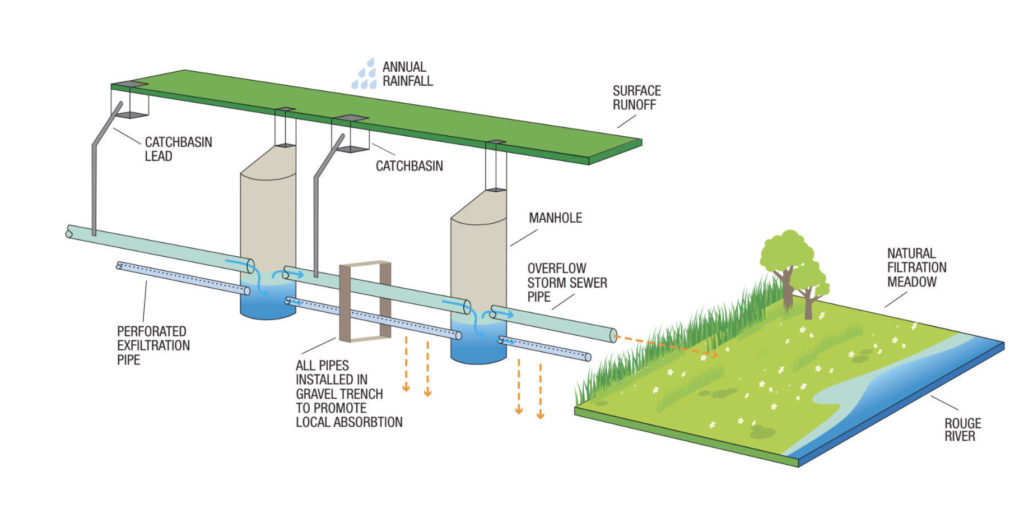Designing to Sustain

The Elgin Mills east side expansion didn’t just add 34 acres of land and decades of use: it offered a unique opportunity for environmental innovation.
Just like a park or greenspace, cemeteries are thirsty. Managing water effectively is key to keeping them verdant and healthy — and to ensure they’re good environmental neighbours. In designing the new property at Elgin Mills, we made sustainability a priority with two simple changes to the way we think about — and use — the most essential element of life.
The “Waterless” Cemetery
Though you may not realize it, underground water lines crisscross many of our cemeteries. They’re connected to a municipal water source with a meter, which works just like the ones you’ll find at any home or business. Unfortunately, we were seeing the effects of waste, whether from leaking pipes or taps accidentally left running. When those leaks happen underground, they can go undetected for quite a while, wasting water and creating soggy, unsightly patches along roads. We knew we could be more efficient.
When designing the eastern expansion, we decided to tackle waste by creating our first “waterless” cemetery. That is, one with little to no below-ground water infrastructure for public use. Today all water used by visitors on the new property, whether to water flowers or give their dogs a drink, is supplied by self-serve, above-ground tanks refilled by water trucks. This lets us maintain close control over use and eliminate the need for disruptive maintenance to below-ground pipes. Now monitoring consumption is easier, and we’re able to choose where it comes from, whether from municipal sources or recycled from the property itself. It also means that our visitors and our teams are more mindful of the water they’re using every day.

Storm Water Management, Naturally
Most cemeteries direct rainwater runoff from roads and other elevated sections to flow into catch basins, then to below-ground storm water management pipes and finally to large on-site retention ponds. But for the east side expansion, we wanted an alternative that would preserve as much greenspace as possible.
Along with the Toronto Region Conservation Authority and the community of Richmond Hill, we designed a solution directly inspired by nature. By introducing new perforated pipes, we allow for some of the water to filter cleanly back into the ground. This significantly reduces the volume at the end of the pipe, and mimics the natural world where rainwater is absorbed where it falls.
The remaining storm water is now discharged into a grassy meadow that separates the developed lands from the tributary of the Rouge River. Any remaining sediment is filtered and contained naturally, protecting the tributary and removing the need for a retaining pond. This has created a self-contained, sustainable ecosystem where the water either remains within the developed land itself or is treated by nature in the meadow. And it’s a simple blueprint for responsible development tomorrow.
This article first appeared in MPG’s Year in Review 2020.